Why you should consider the gut health of your chickens (PLUS how to improve it)
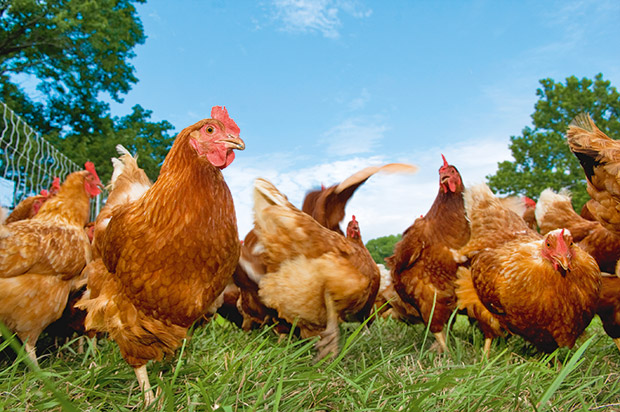
Probiotics can benefit your birds from birth, helping them to grow faster and preventing diseases.
Words: Nadene Hall
Seventy years ago, commercial poultry companies around the world started using antibiotics in feed. The result was birds that grew twice as fast as those on non-medicated feed and there were far fewer deaths from diseases.
Antibiotics are still commonly used in the pig and poultry industry in NZ. However, the rise of antibiotic-resistant ‘superbugs’ has resulted in much stricter controls. The regular use of antibiotics in feed is now banned in some countries, although not yet in NZ.
But research shows probiotics and prebiotics can greatly benefit bird health. While they can’t kill bacteria that cause disease as antibiotics do, they offer some protection from bacterial infections and help improve growth and general health.
Birds with poor gut microbiota are more susceptible to disease, develop poorer immune systems, and don’t grow as fast or as big as those with well-developed gut microbiota. They’re unable to properly digest food or absorb nutrients, leading to the overgrowth of harmful bacteria and the loss of beneficial ones.
WHAT ARE PROBIOTICS?
Probiotics (also known as direct-fed microbials or DFMs) are live organisms that help with fermentation in the gut. They aid digestion by supporting beneficial bacteria, so the gastrointestinal tract is better at absorbing nutrients. They also support the immune system, helping to prevent disease.
Around 70% of the bacteria found in the poultry digestive tract are Lactobacillus strains.
Common beneficial bacteria found in poultry include:
Lactobacillus acidophilus: improves body growth, prevents harmful microorganisms, helps with fermentation of feed in the gut.
Lactobacillus casei: reduces colonisation of bad bacteria, reduces impact of harmful microorganisms, ferments carbohydrates.
Bifidobacterial thermophilium: helps the immune system.
Enterococcus faecium: reduces impact of harmful microorganisms, helps with carbohydrate fermentation.
THE GOOD GUYS IN YOUR CHICKENS
New research shows there are 800 species of bacteria – both beneficial and harmful – in the gastrointestinal tract of a chicken, plus fungi, protozoa, and viruses. Most are new to science.
Different beneficial bacteria are found in different organs. They begin to develop after hatching as chicks pick up bacteria from their environment, feed, and people who touch them. It takes around 3-4 weeks for the entire gastrointestinal tract to become colonised.
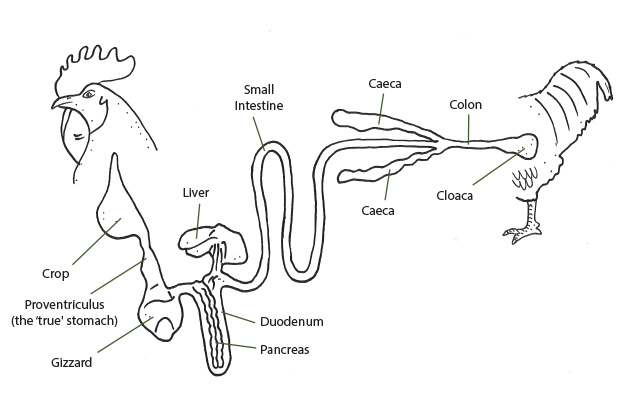
From hatching to four weeks or so is an ideal time to feed a probiotic as it helps pioneer the bacterial community in the chick’s body when it’s most actively growing.
The crop
Bacteria: Lactobacilli
Role: to ferment carbohydrates in feed, produce lactic acid to reduce crop pH.
The crop is primarily a storage organ, so birds can eat rapidly, then retreat to safety to digest it. Digestive enzymes in their saliva start to break food down, but it’s not properly digested until it reaches the proventriculus and gizzard.
Proventriculus
Bacteria: unknown, but believed to be very few
Role: none identified
The proventriculus or ‘true’ stomach is full of highly acidic digestive juices, which help to break food down. It’s so acidic, it’s inhospitable to most bacteria.
Gizzard
Bacteria: Lactobacilli, enterococci, lactose-negative enterobacteria, coliform bacteria
Role: Fermentation
The gizzard contains similar levels of lactobacilli to the crop, but fermentation is much slower as it’s a highly acidic environment.
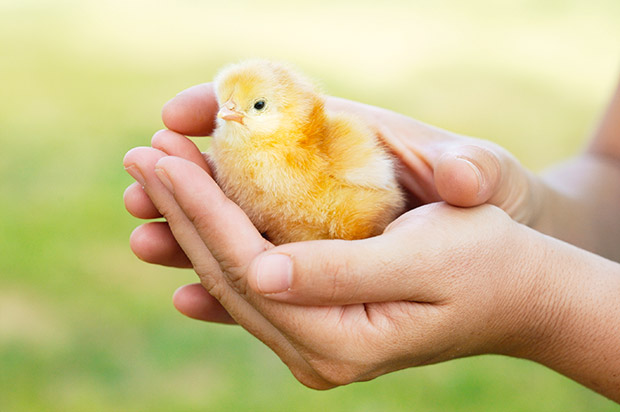
Small intestine (including duodenum)
Bacteria: mainly Lactobacilli, also enterococci, E. coli, eubacteria, clostridia, propionibacteria, fusobacteria
Role: disease prevention, antimicrobial, immune system development, nutrient absorption
Beneficial bacteria in the small intestine evolve as birds age. Their roles include:
• forming a protective barrier, lining the gut to prevent harmful bacteria such as salmonella, campylobacter, and Clostridium perfringens from attaching to gut cells and colonising them;
• secreting compounds to inhibit or make the environment unsuitable for less favourable bacteria;
• maintaining the gut’s immune system so it can quickly spot and react to pathogens;
• helping birds gain extra nutrients and better growth from plant fibres that can’t be digested properly higher in the GI tract.
Caeca
Bacteria: Lactobacilli, coliforms, enterococci (chicks 0-2 weeks), bacteroides, eubacteria, bifidobacterial, clostridia (2 weeks-adulthood)
Role: fermentation
The caeca (sometimes spelled ceca) breaks down and extracts nutrients from more fibrous plant material that makes it through the GI tract without being properly digested. It contains slower-growing fermentative types of bacteria.
WHEN SHOULD YOU FEED A PROBIOTIC?
There are two good times to feed probiotics: to chicks and to a bird that’s recovering from an illness, especially if it’s received an antibiotic.
If you buy day-old chicks or you’re hatching eggs in an incubator, they’re not going to receive the microbes they’d naturally pick up from their mother and other adults. A probiotic helps bacteria to colonise the gut.
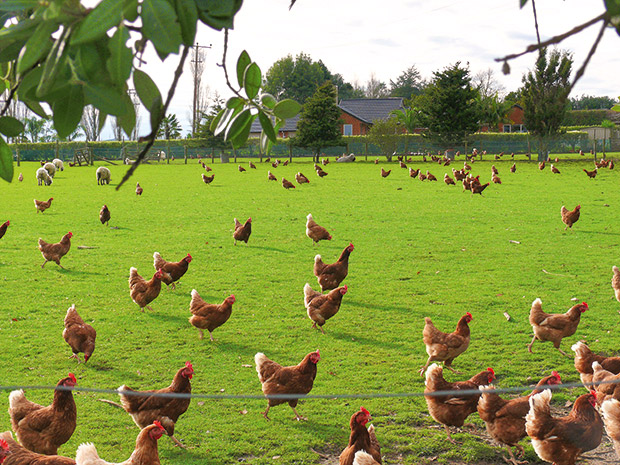
The other is after illness, says lifestyle block vet Dr Sarah Clews. “I recommend the use of probiotics for any animal recovering from an illness to aid holistic health. They also have a specific role in repopulating the gastrointestinal tract after a prolonged course of antibiotics which can otherwise lead to harmful bacteria taking hold, or fungal infections taking over, eg sour crop.”
While there are commercial products available with a wide range of beneficial bacteria, you can also add a small amount of Lactobacilli yoghurt to water (5ml per litre). This dose is very low in lactose (which poultry can’t digest), so it doesn’t upset their gut.
8 CAUSES OF AN UPSET GUT MICROBIOTA
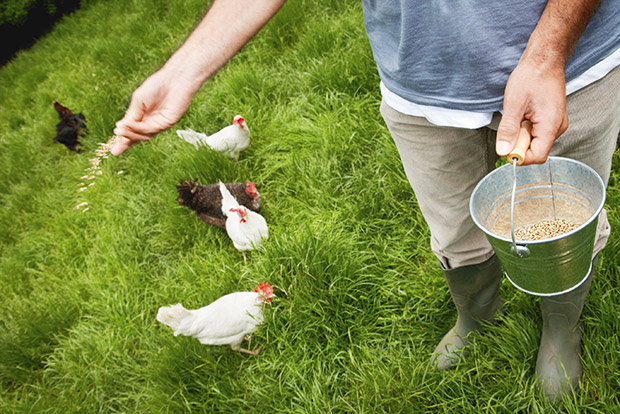
A decline in gut health can be caused by:
• antibiotics;
• poor colonisation of gut bacteria (in chicks);
• a change in feed;
• poor feed quality;
• poor water quality;
• mycotoxins;
• poor environmental conditions, eg lack of ventilation, temperatures too high or low;
• infections, eg viruses, bacteria, coccidiosis.
ANTIBIOTIC USE IN THE NZ POULTRY INDUSTRY
Only a vet can prescribe antibiotics, and usually only after they’ve checked your animal in person.
On many commercial broiler (meat bird) farms, an antibiotic called zinc bacitracin – also used in humans – is routinely fed to birds throughout their lives. It prevents necrotic enteritis, a symptomless, usually fatal gut disease caused by bacteria that live in poultry litter.
To meet food safety standards, they’re switched to an antibiotic-free feed for the specific withholding period just before slaughter.
This is the only antibiotic used regularly in poultry. Others are only prescribed and administered when there is a confirmed disease outbreak.
Love this story? Subscribe now!
 This article first appeared in NZ Lifestyle Block Magazine.
This article first appeared in NZ Lifestyle Block Magazine.
